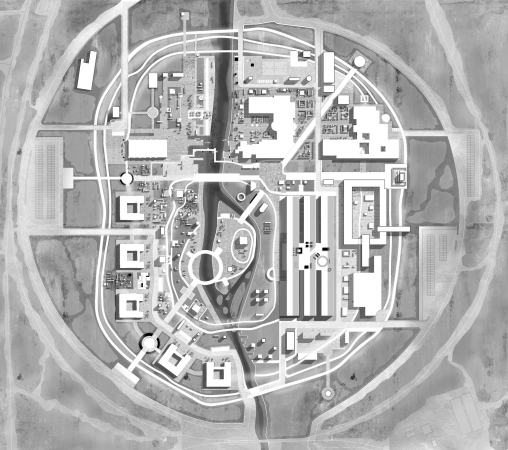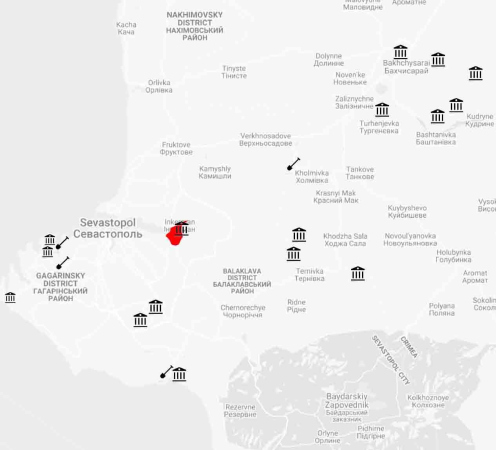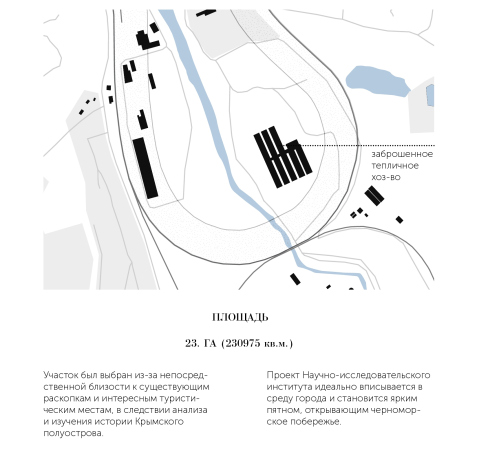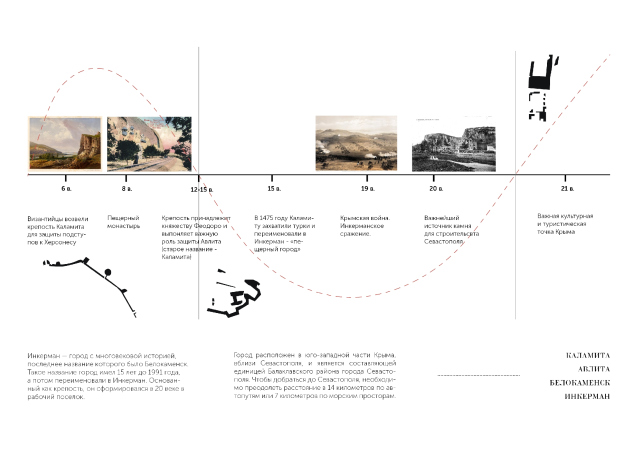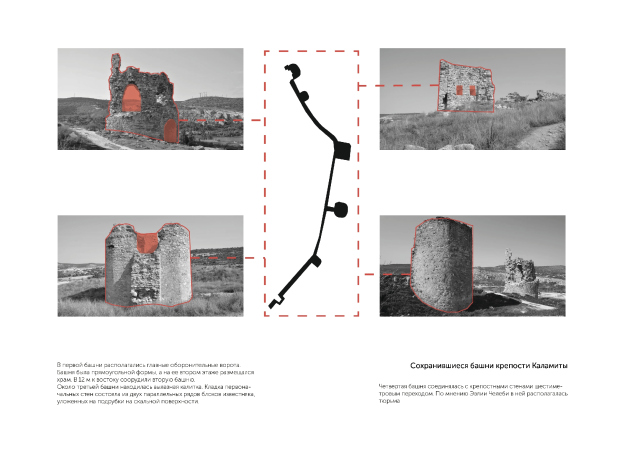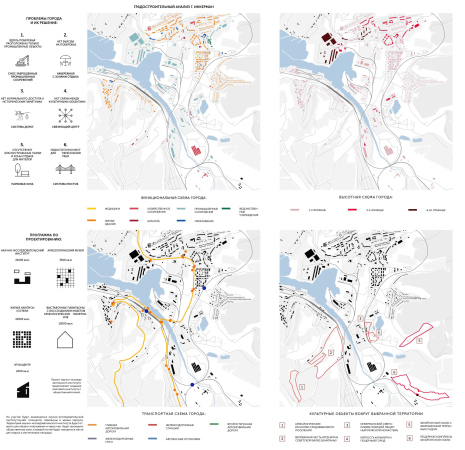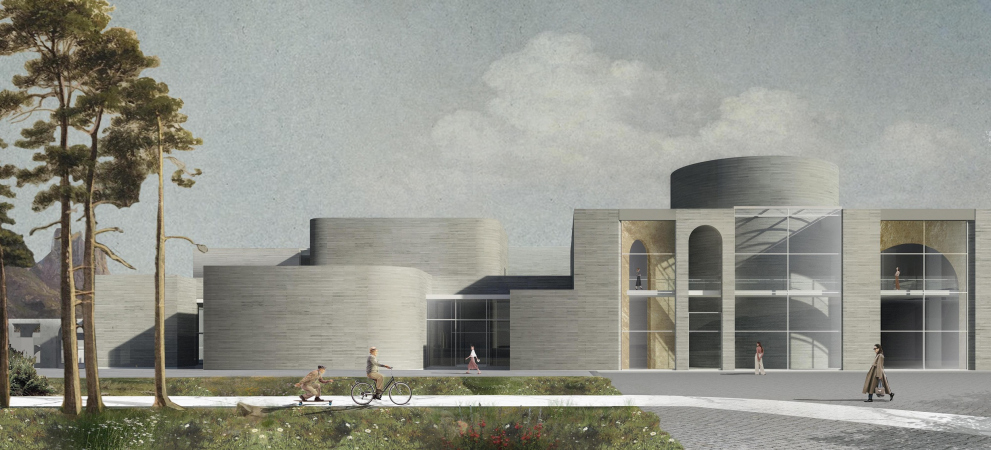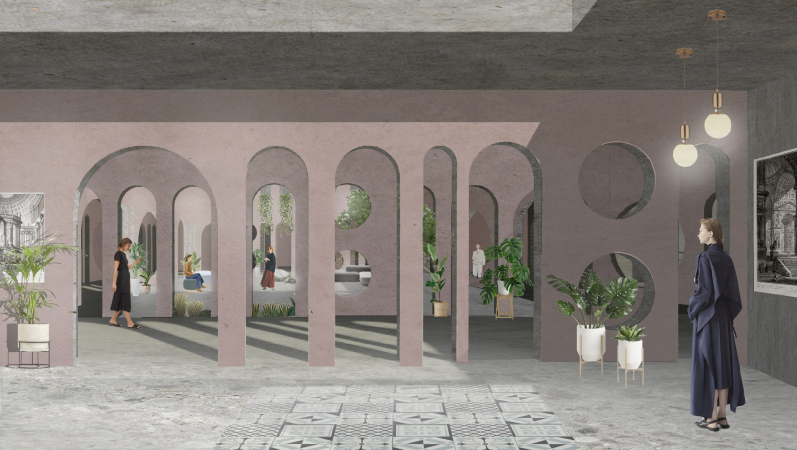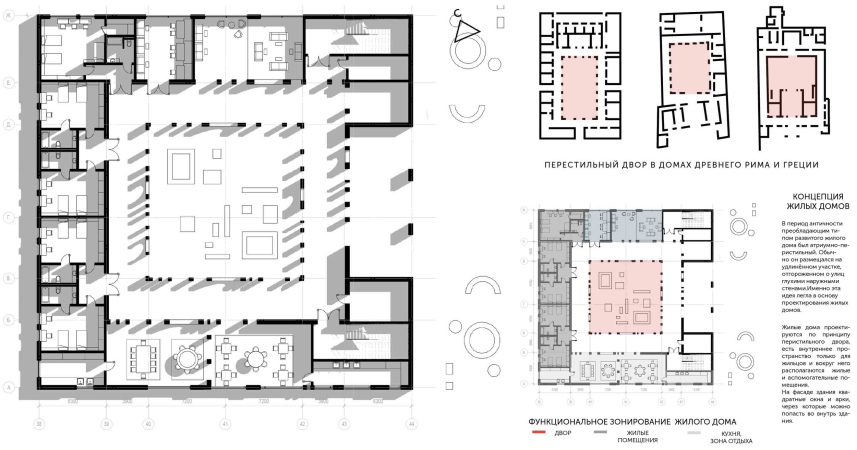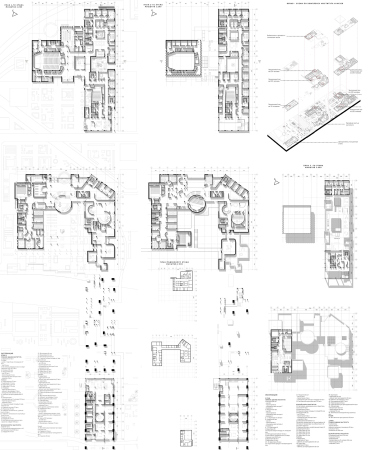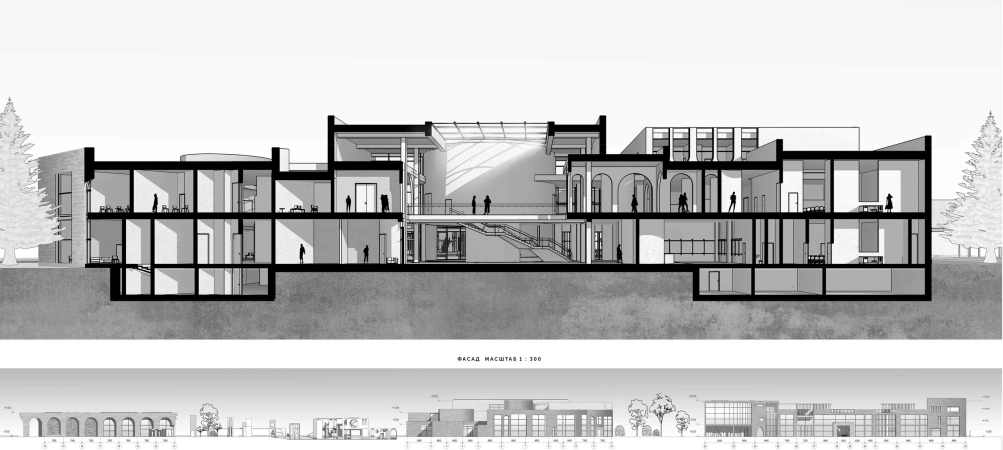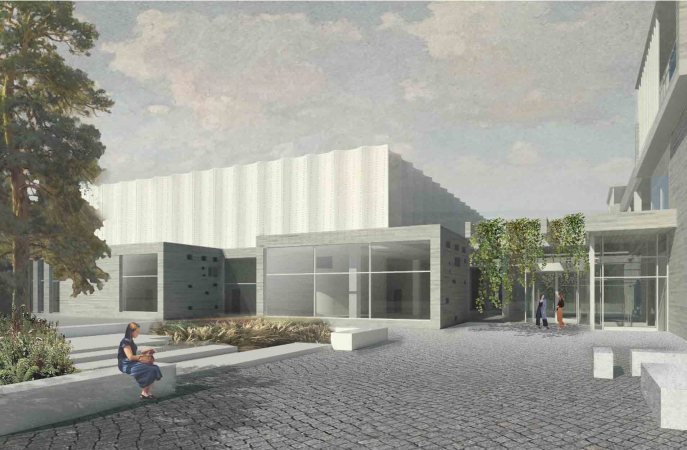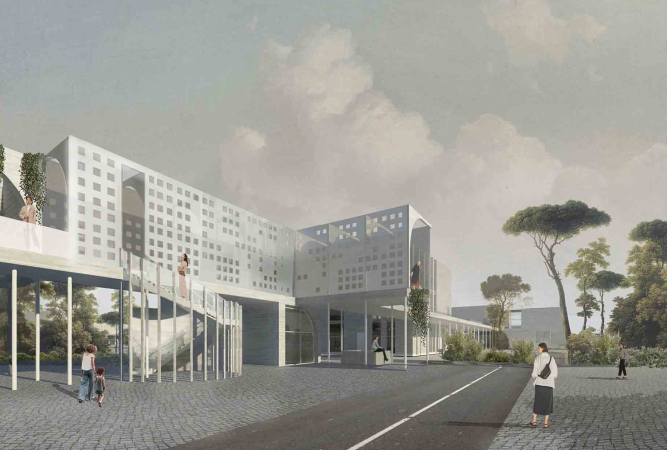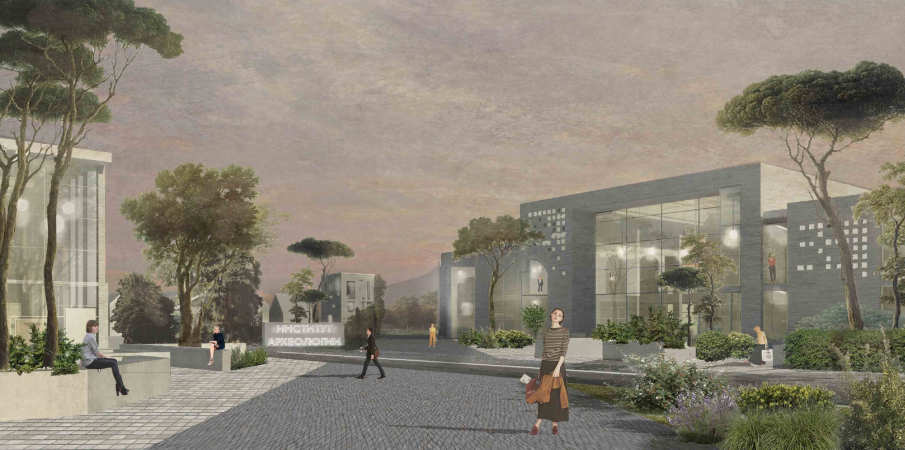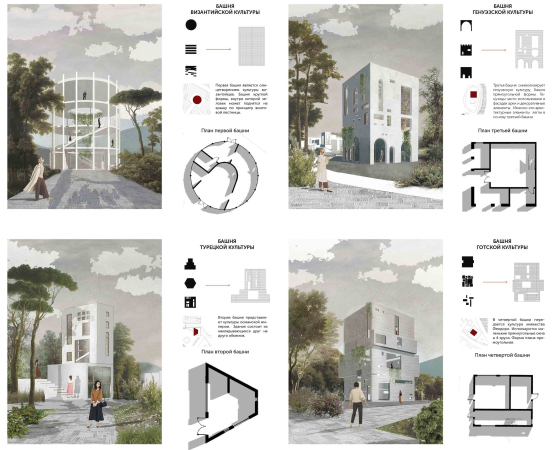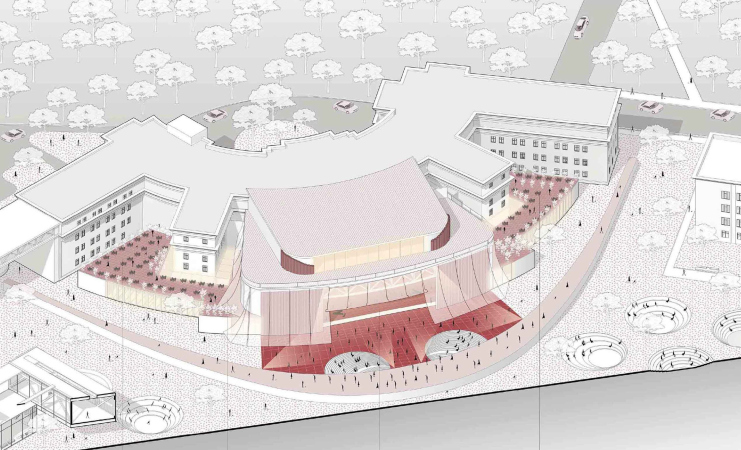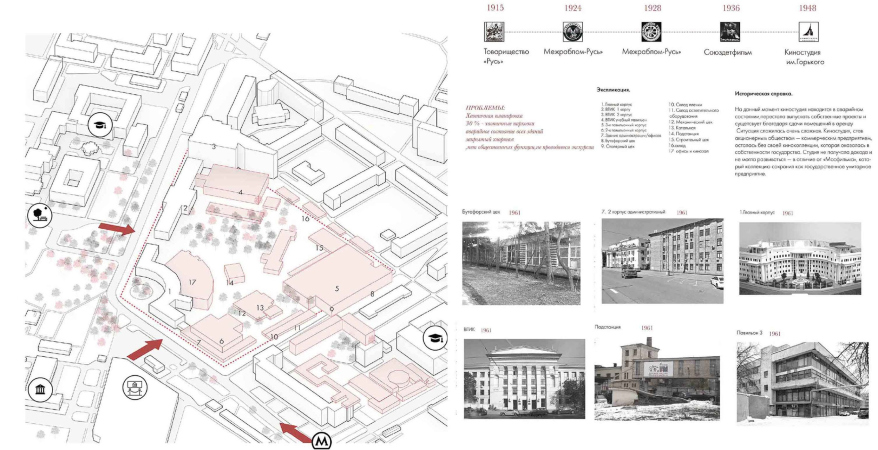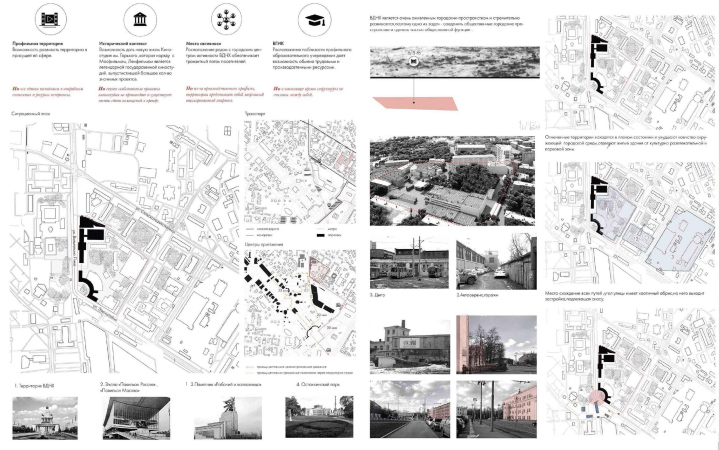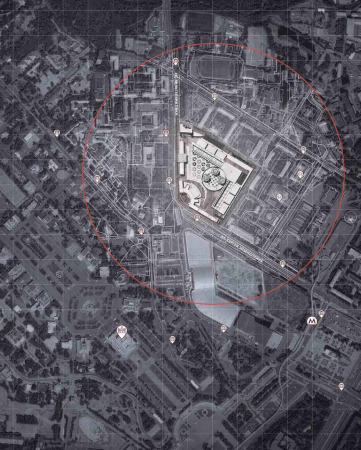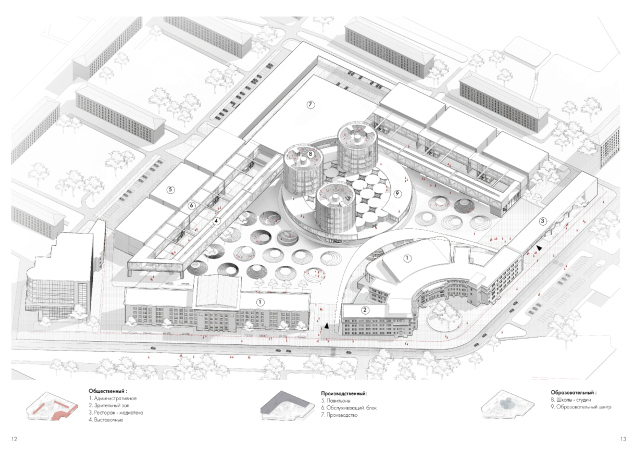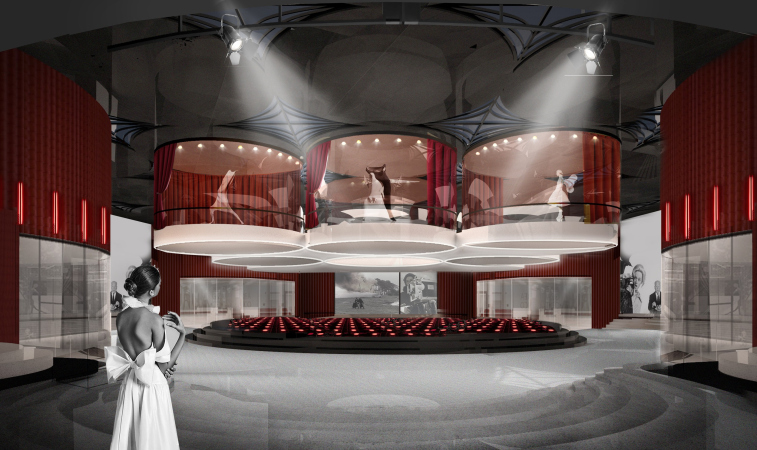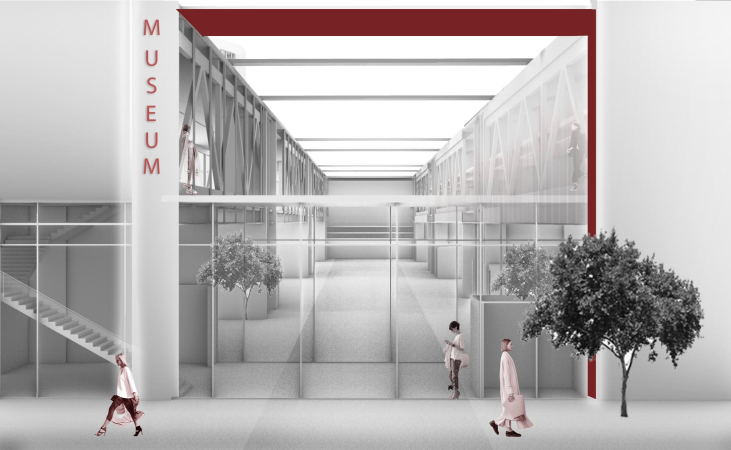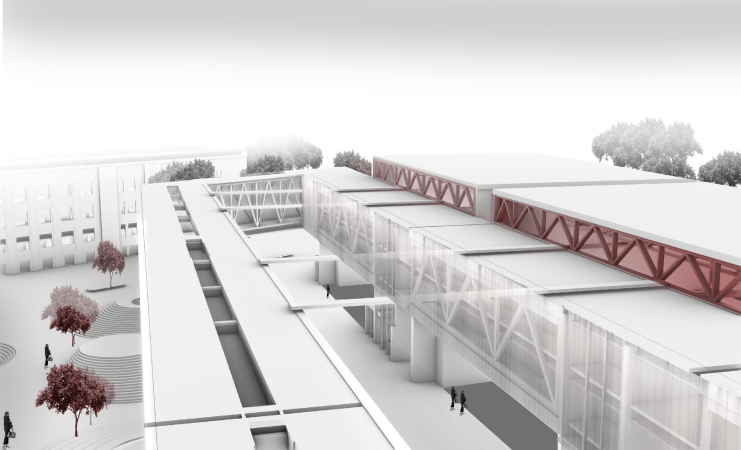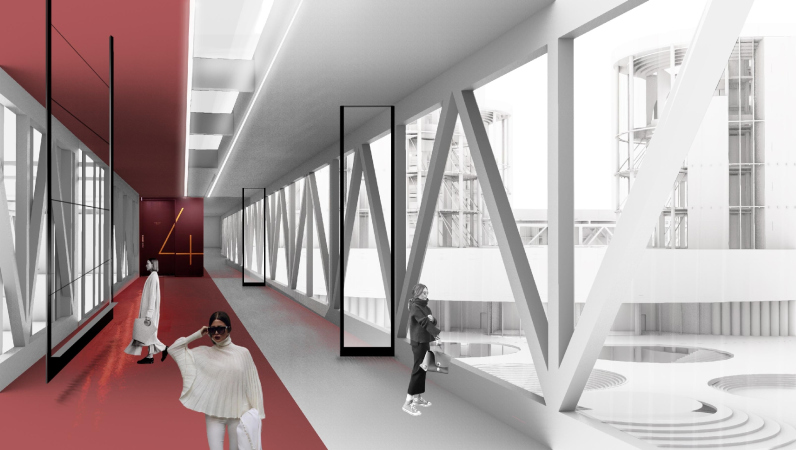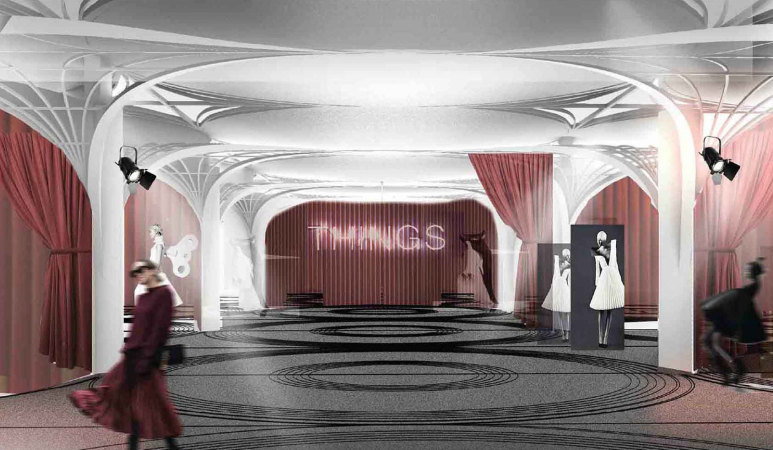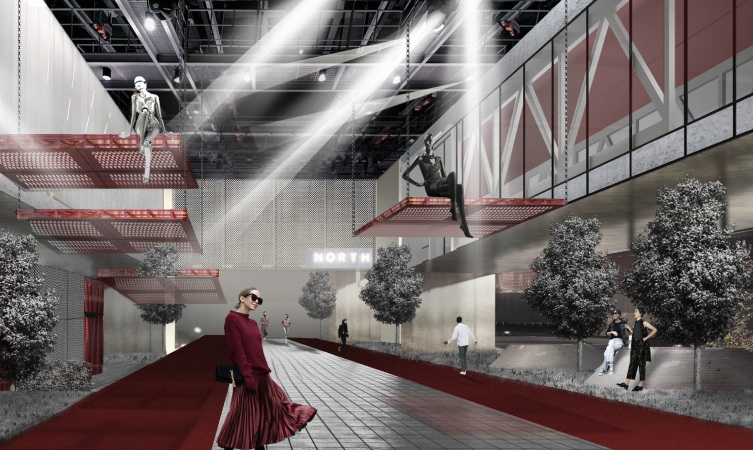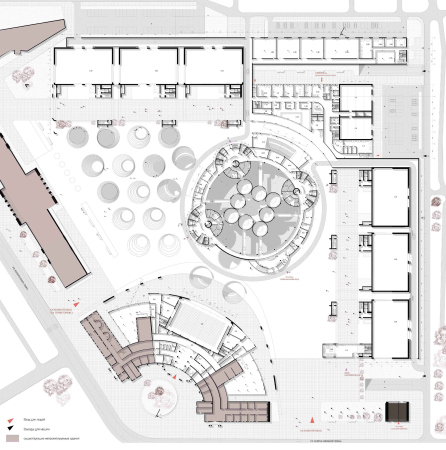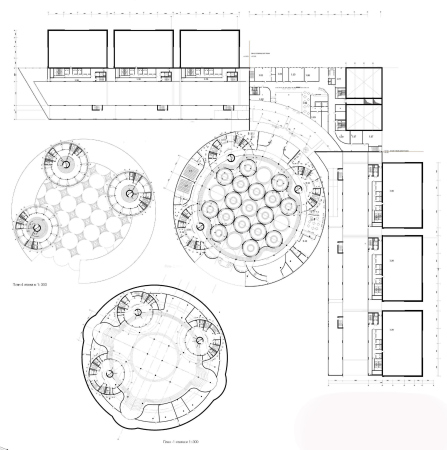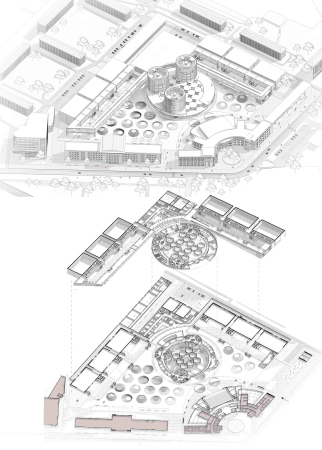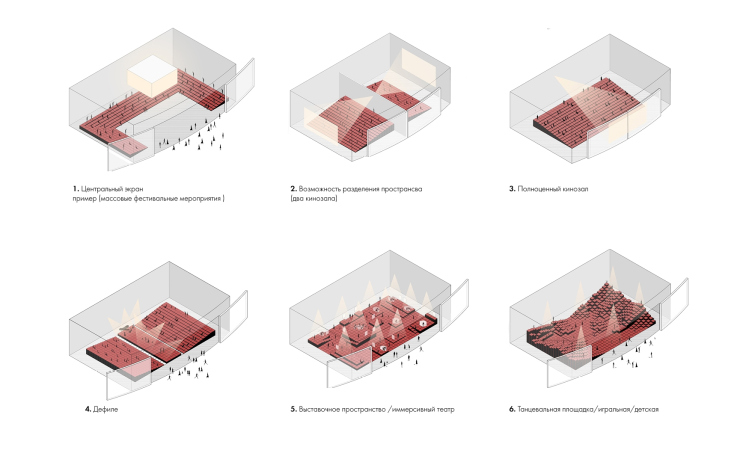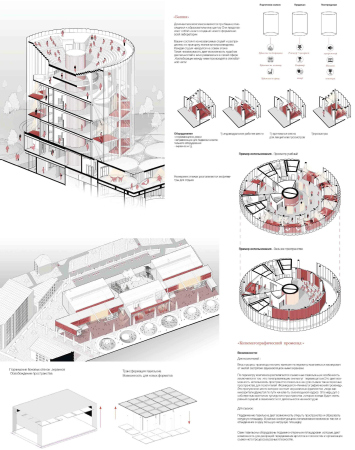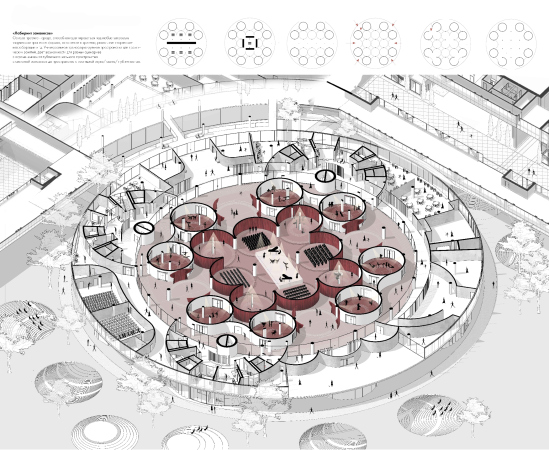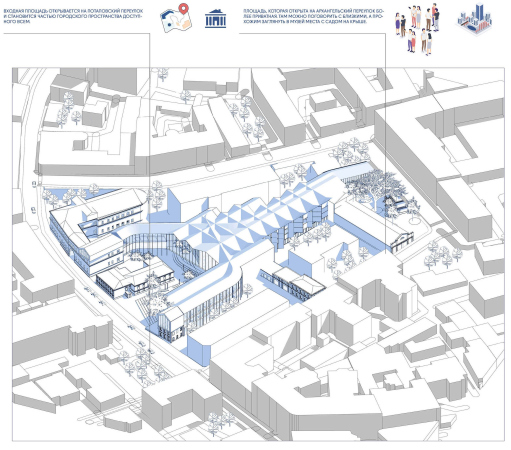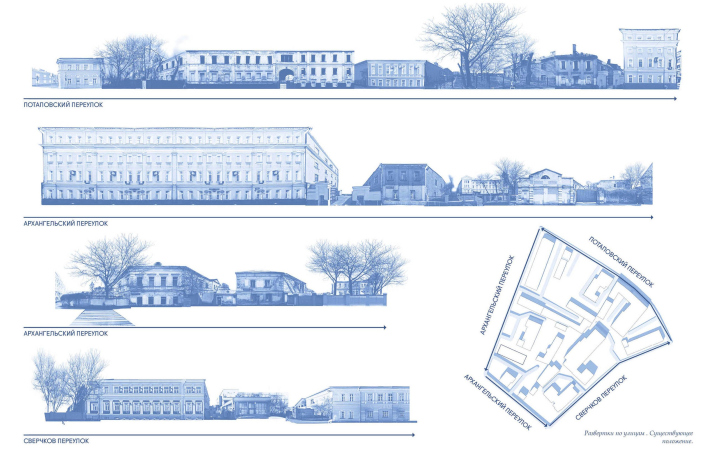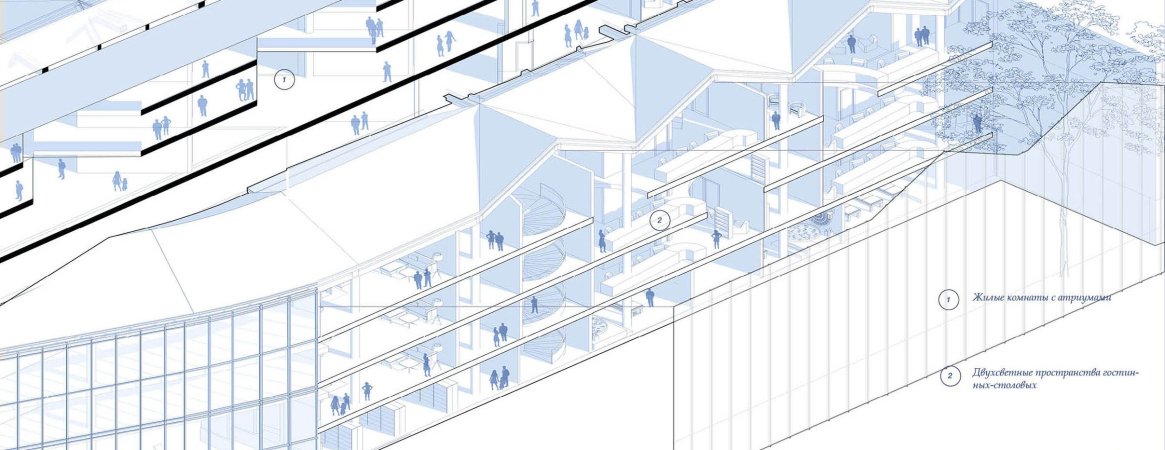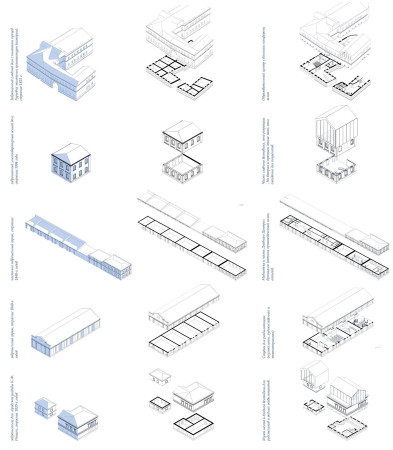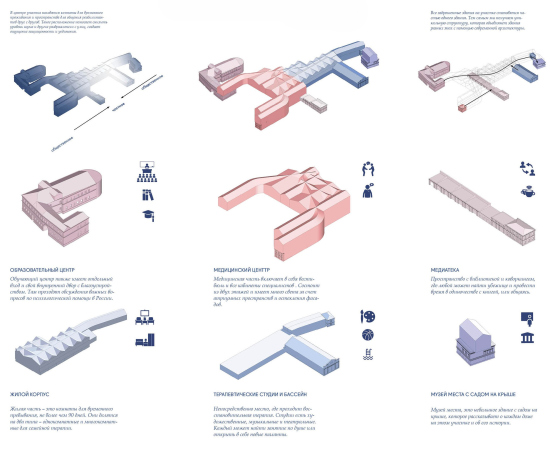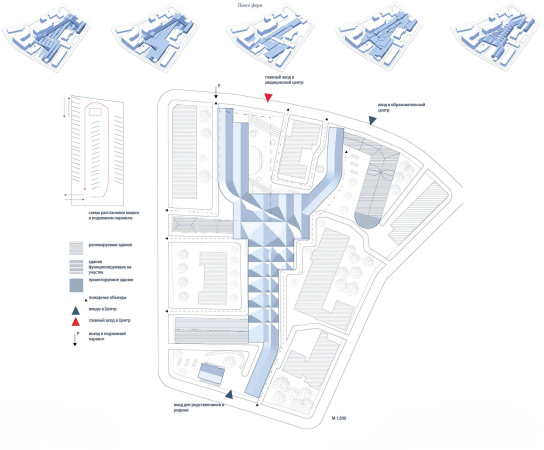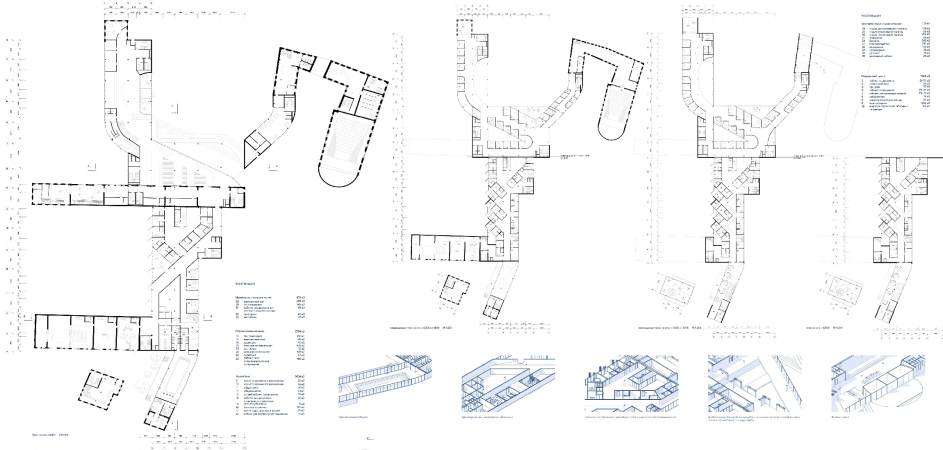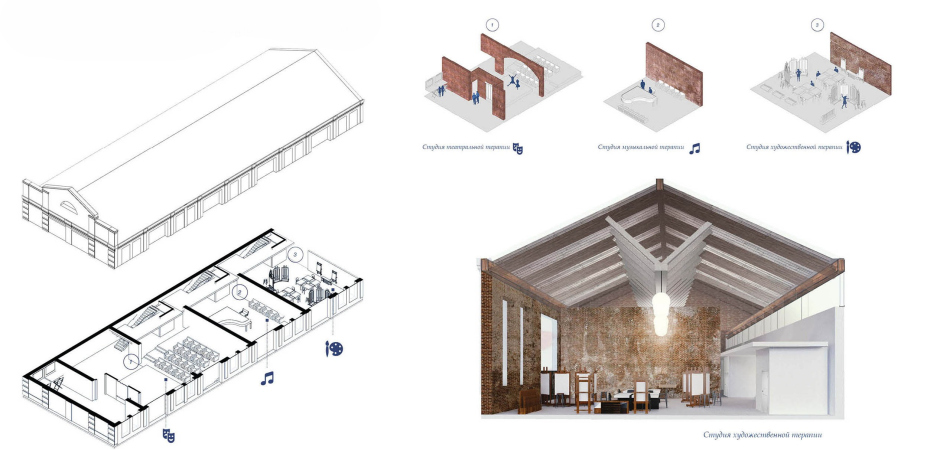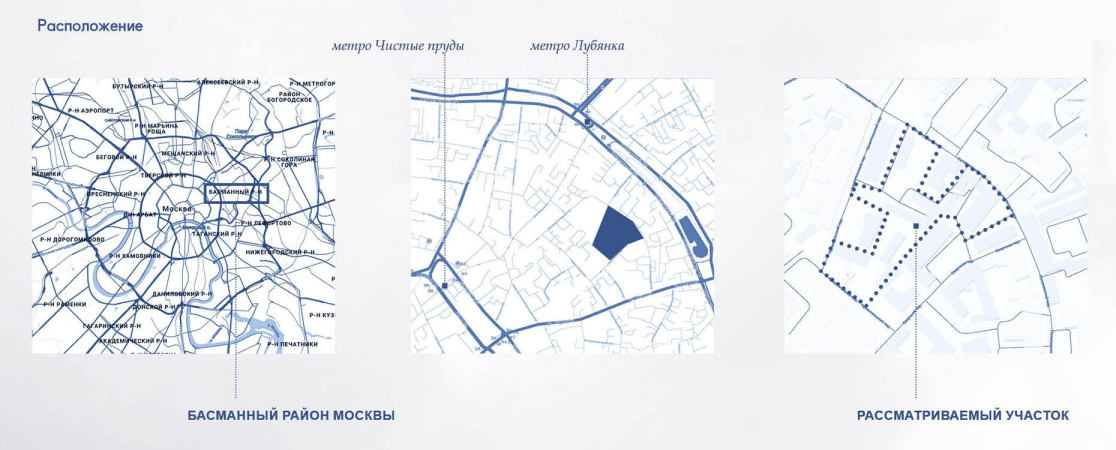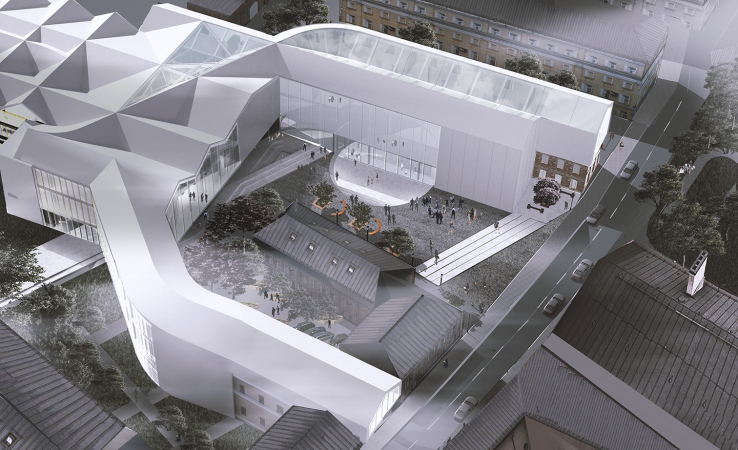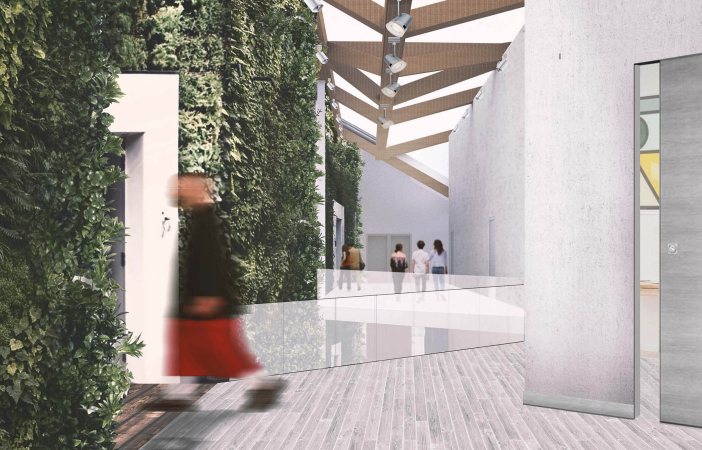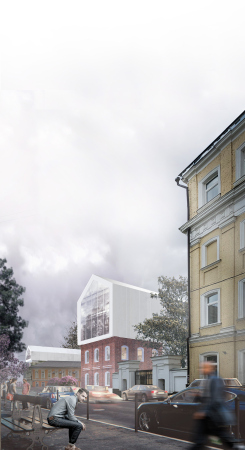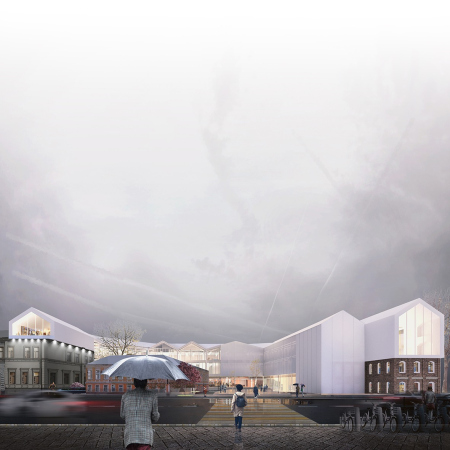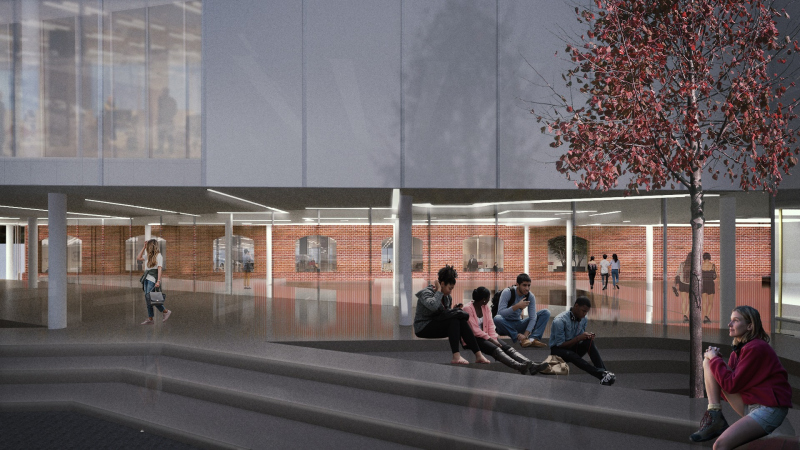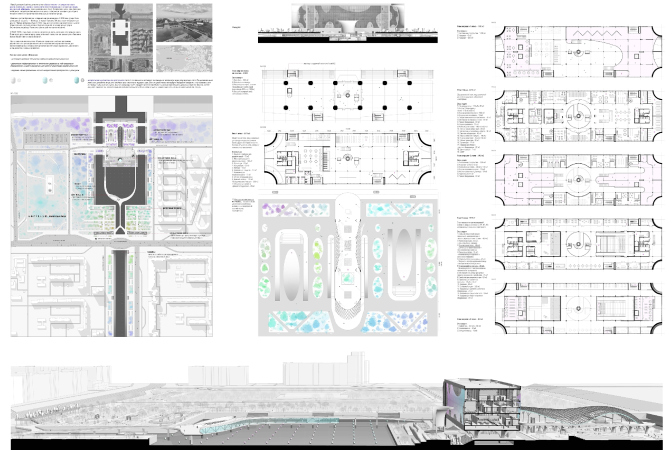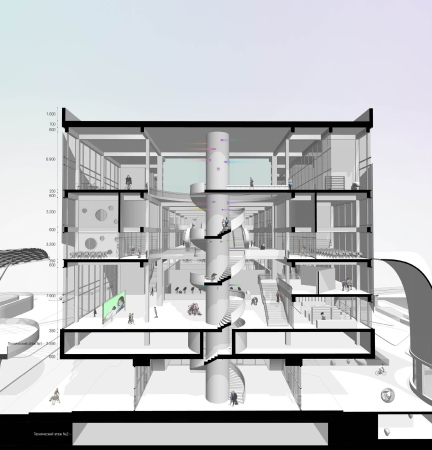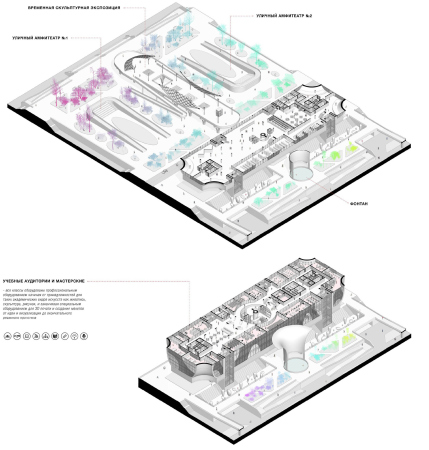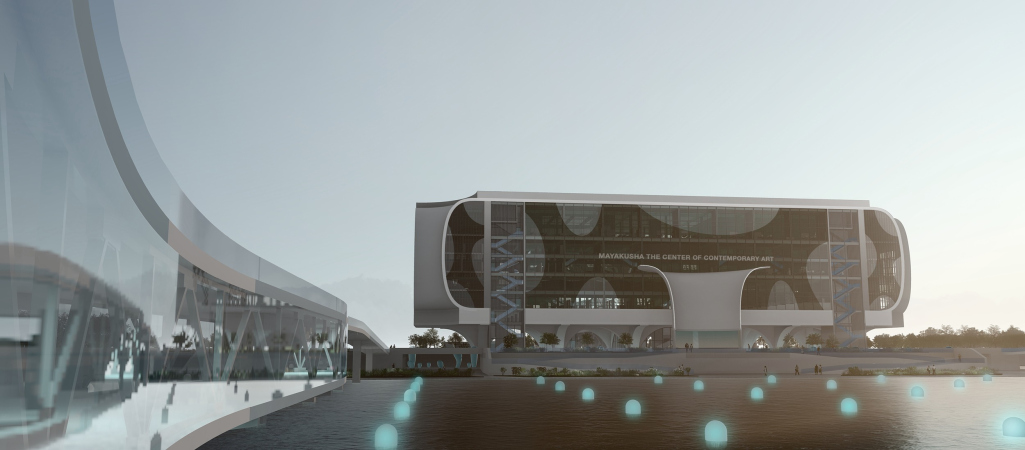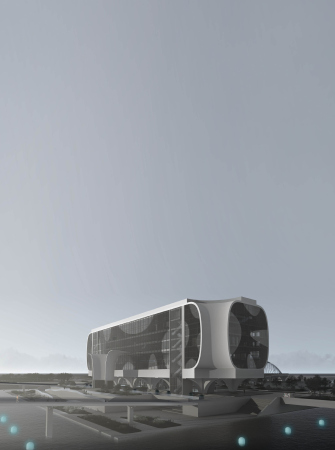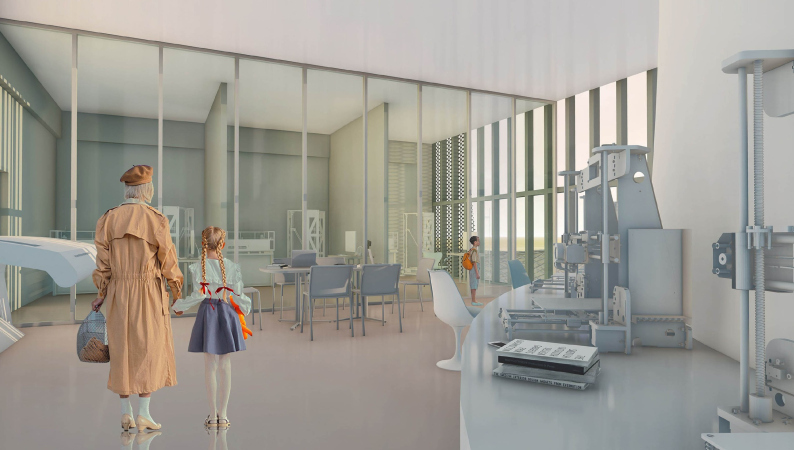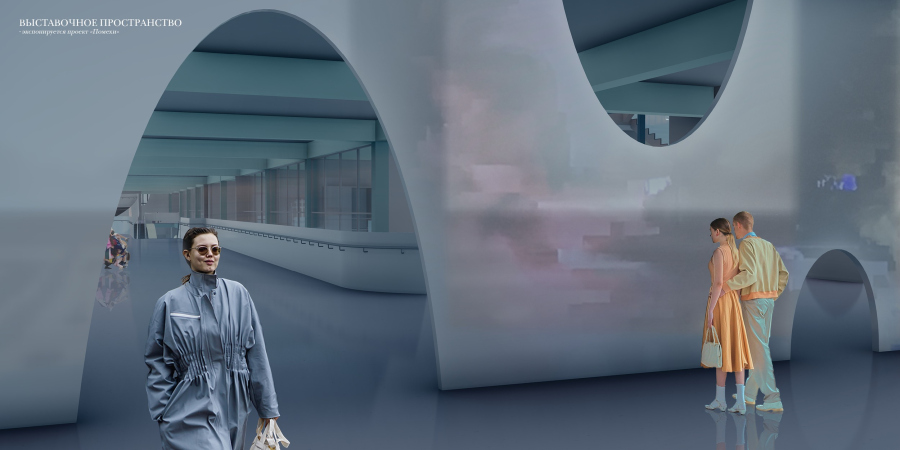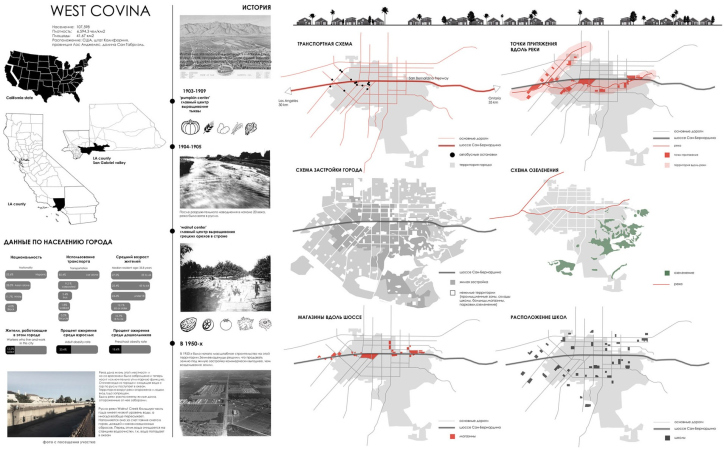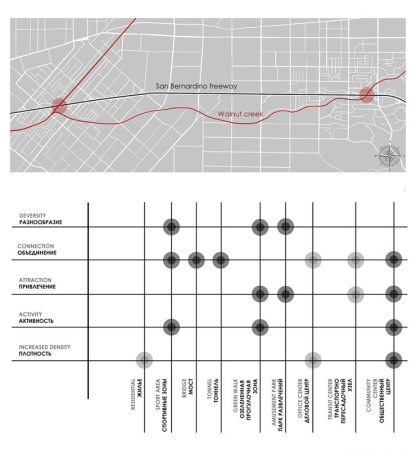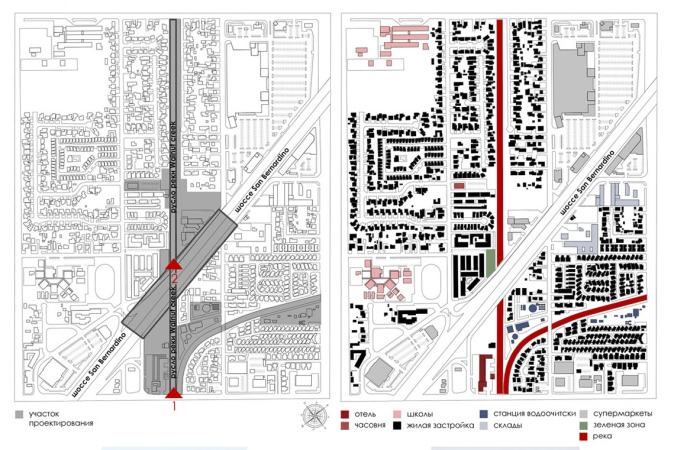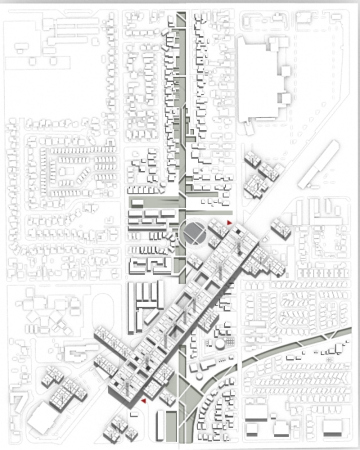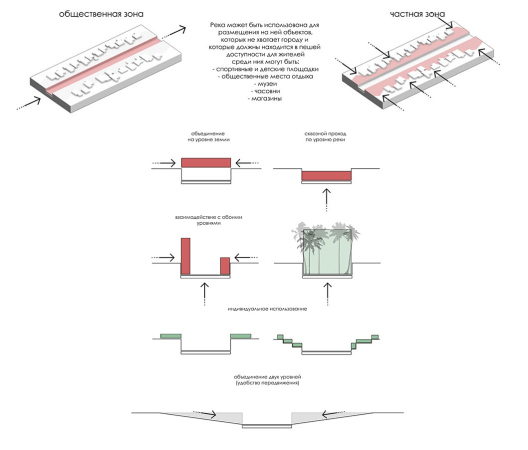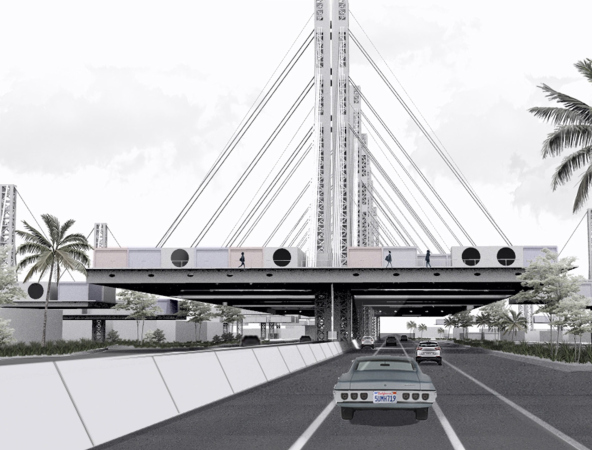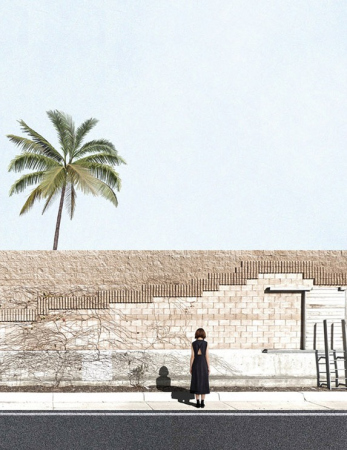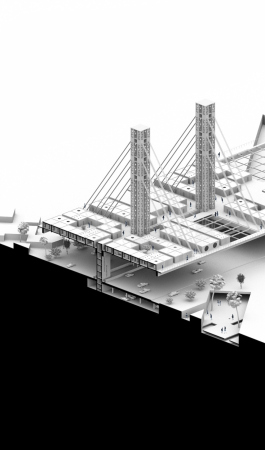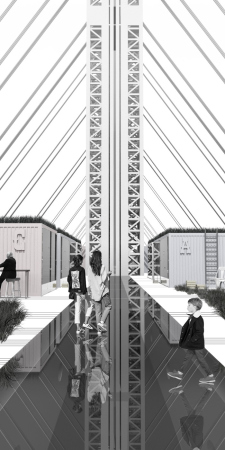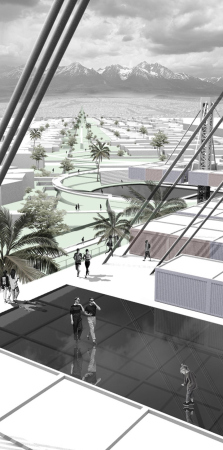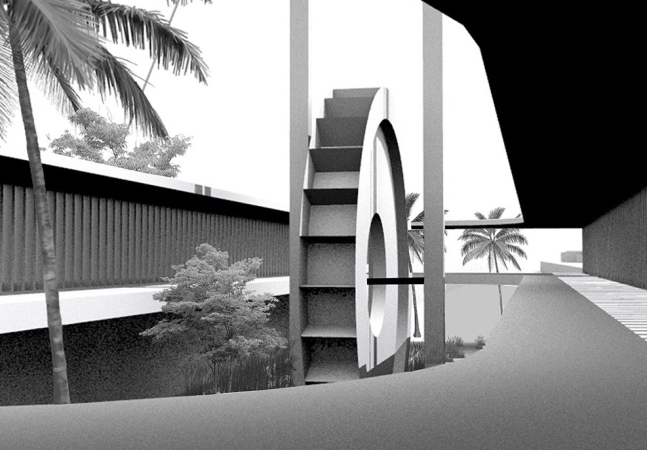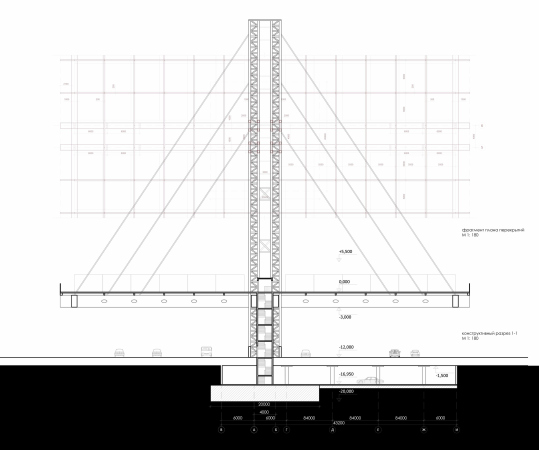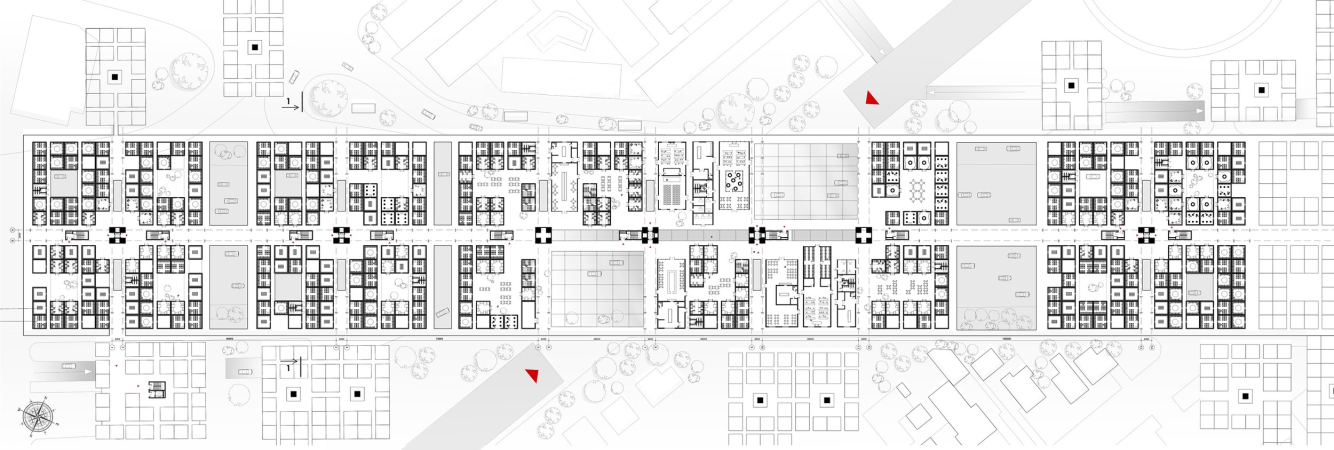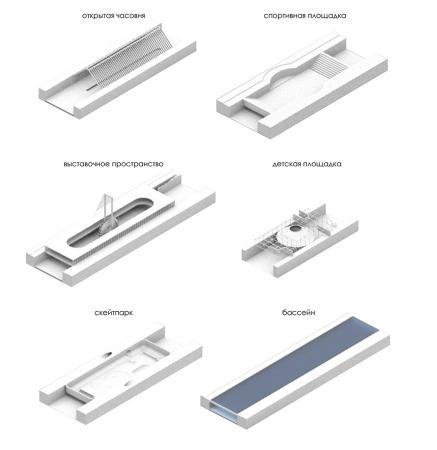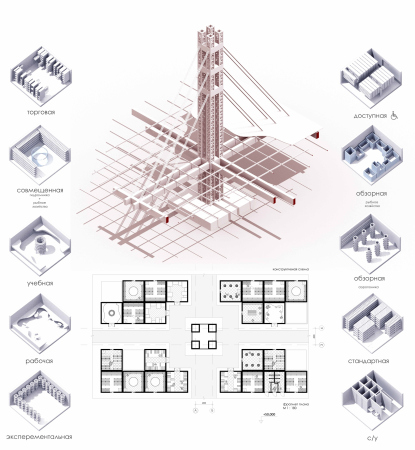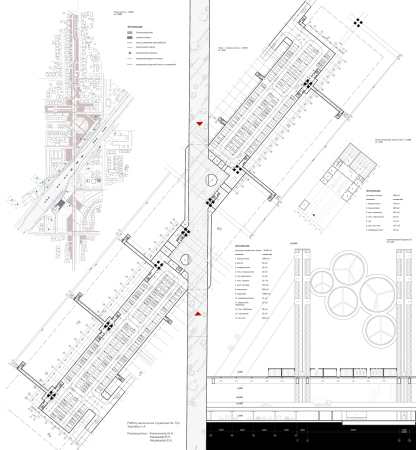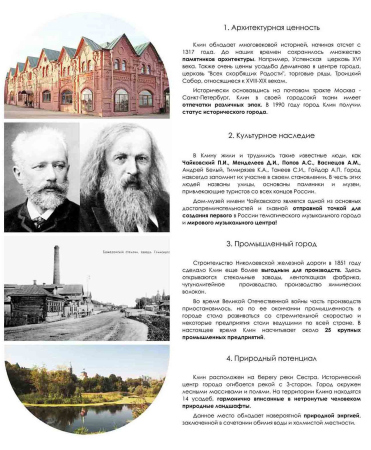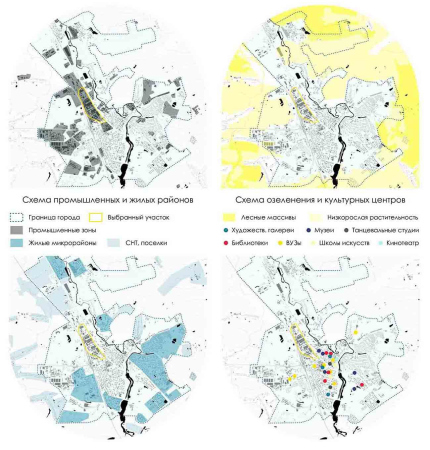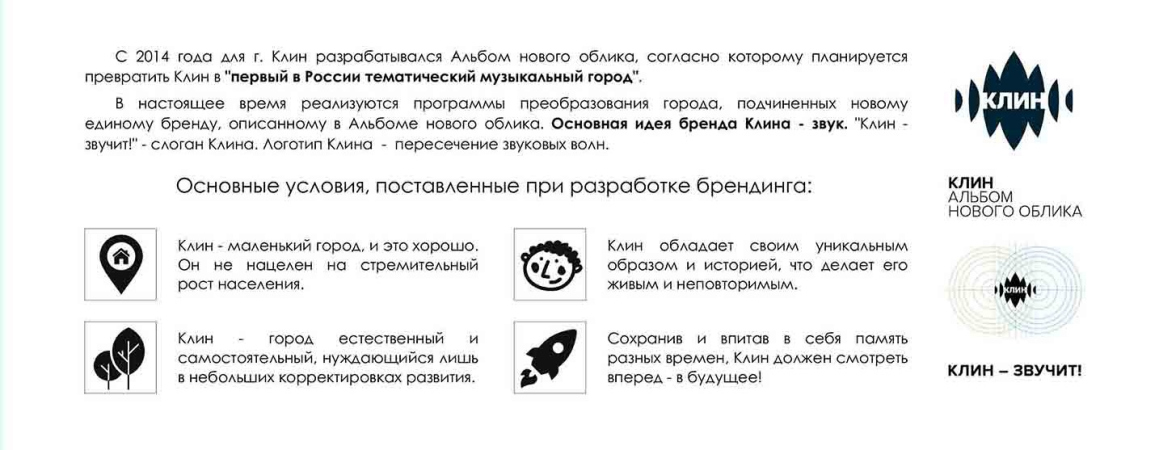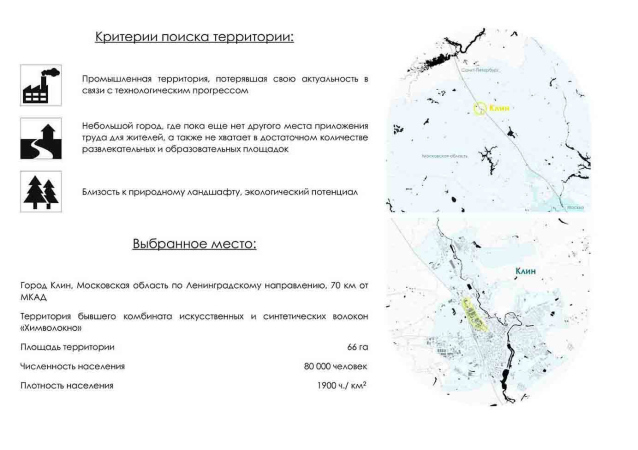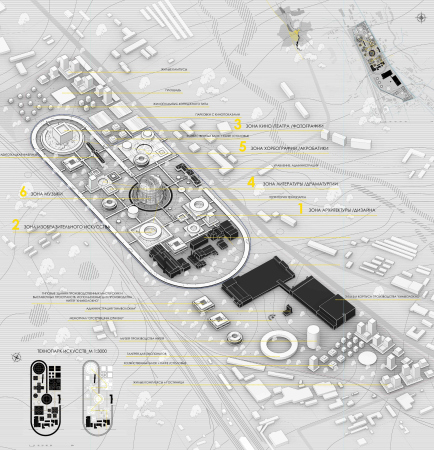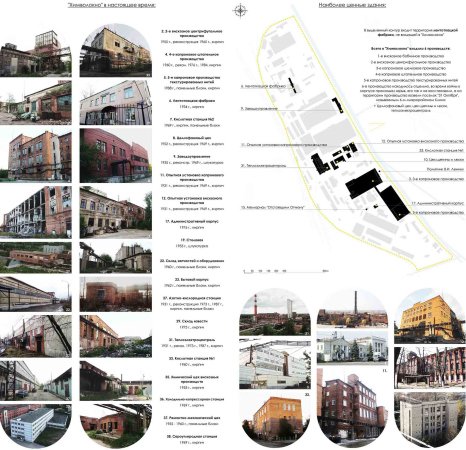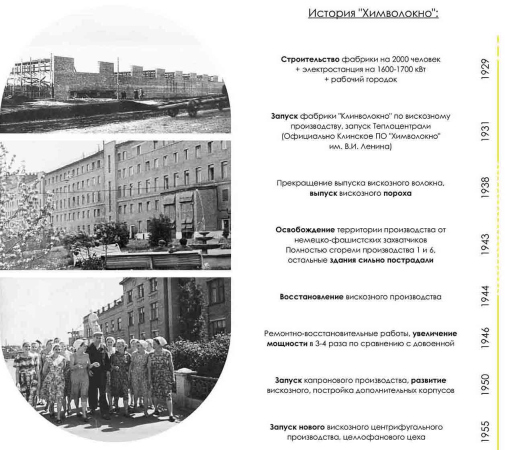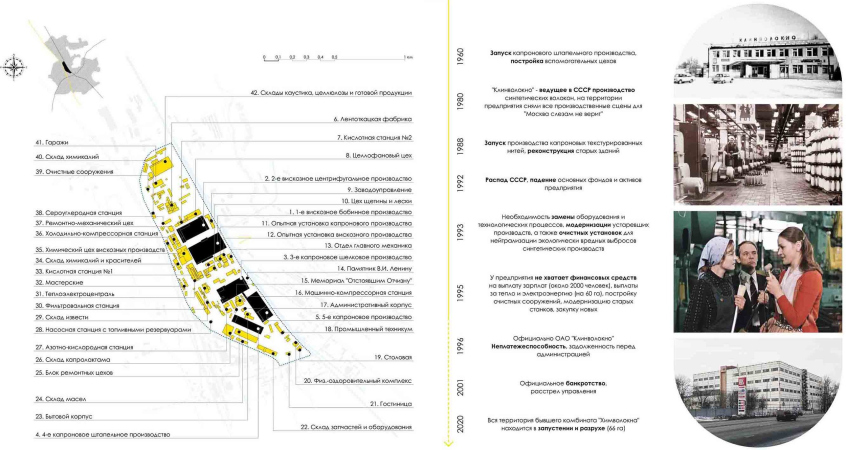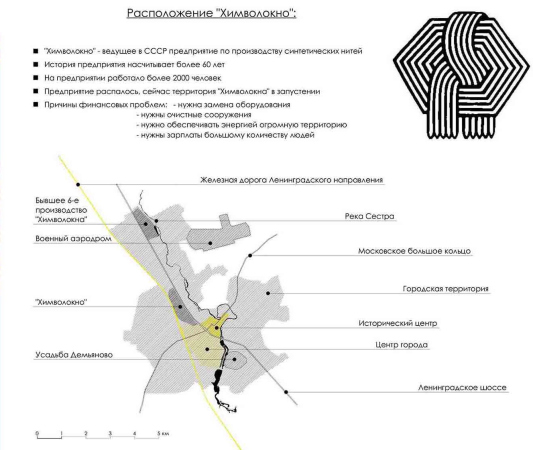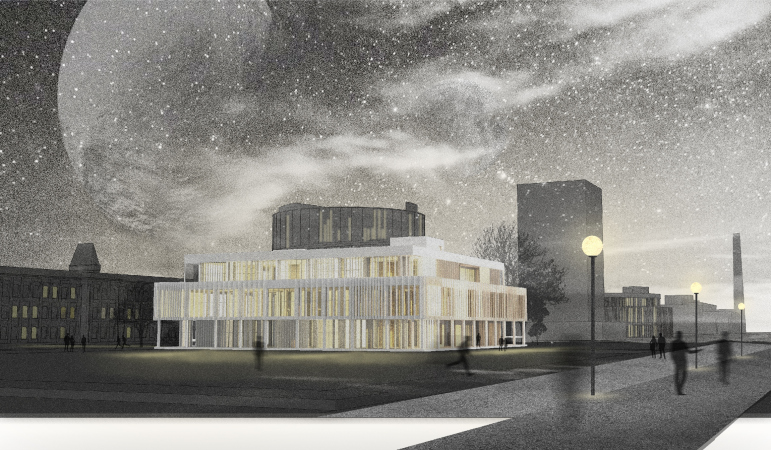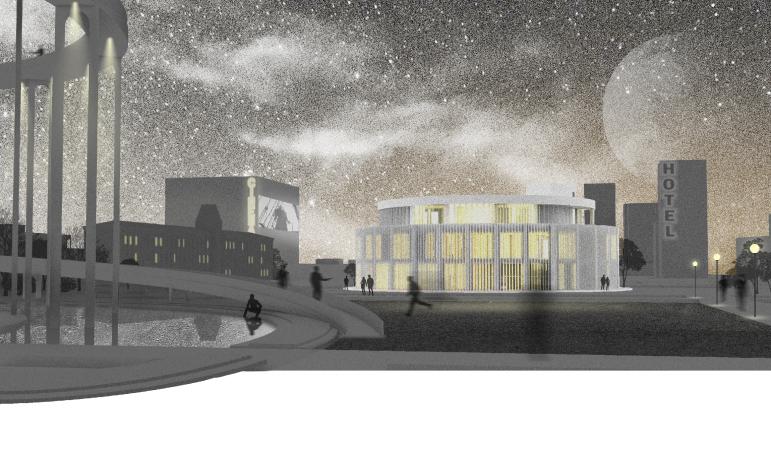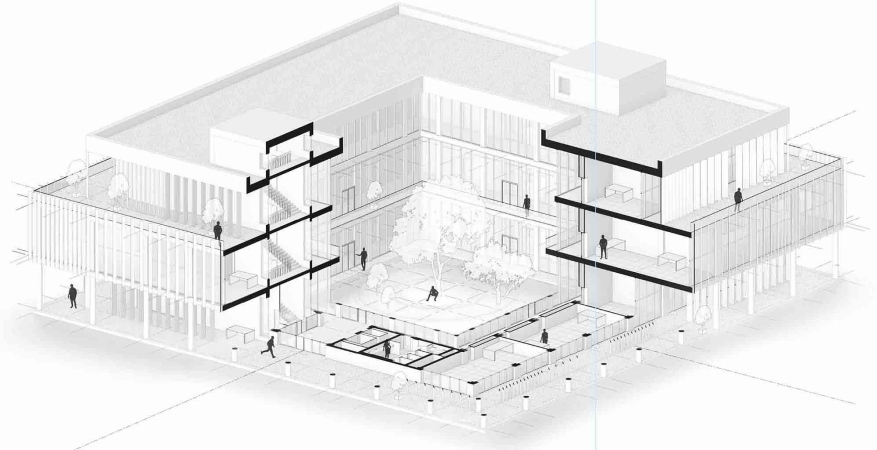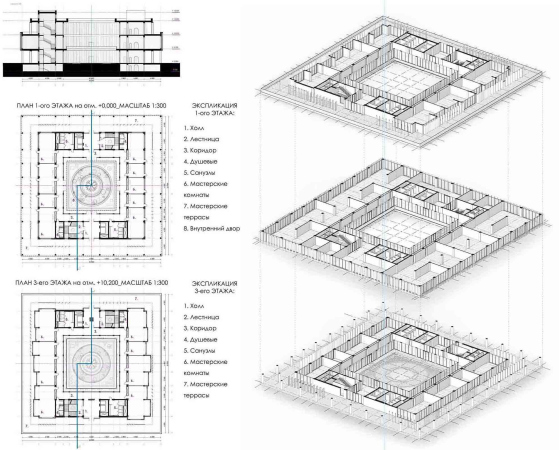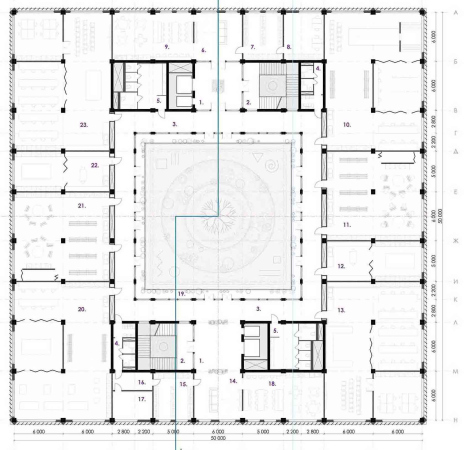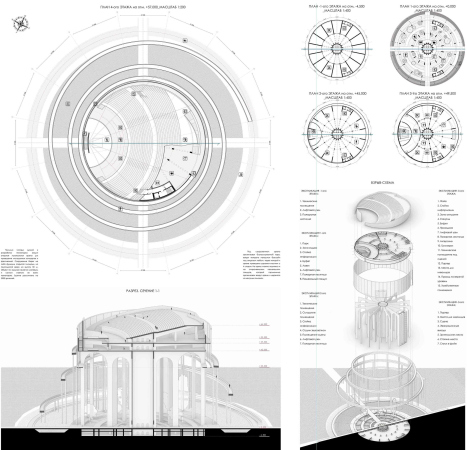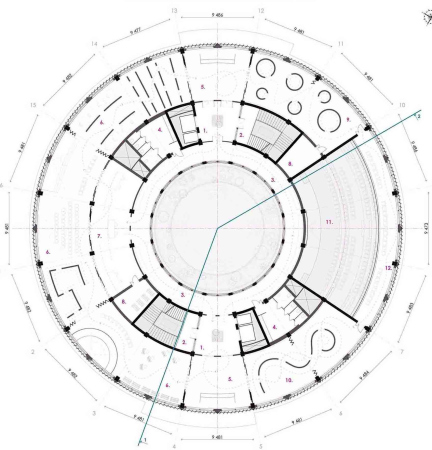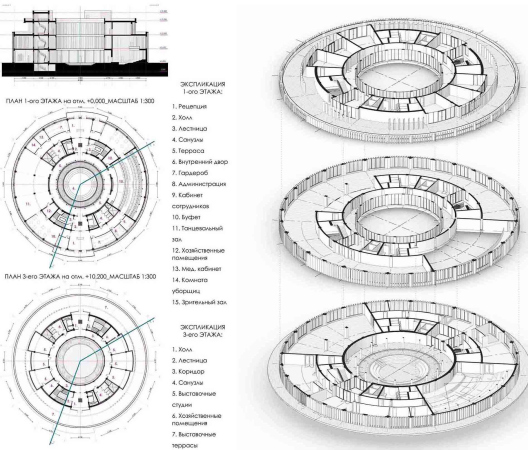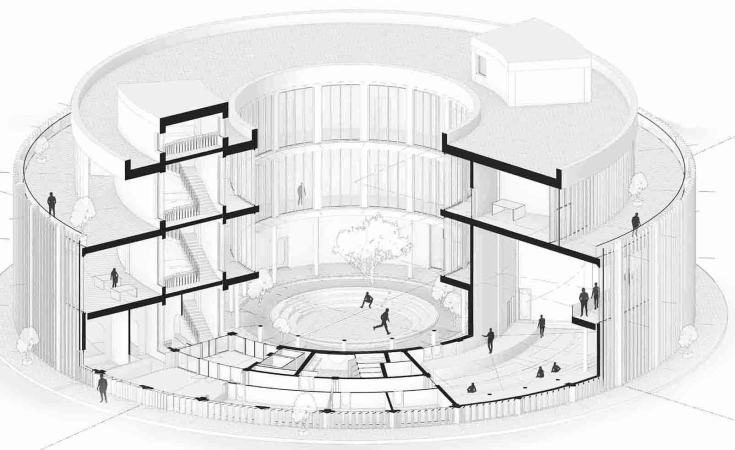This year, a group of bachelors graduated from Moscow Institute of Architecture. For the first time in history, a large part of the design process and the presentations took place remotely. This was quite a challenge, both for us and for our students. Unfortunately, the institute was unable to organize videoconferences for the defense of thesis projects, and all works were accepted virtually without any authors’ comments. I cannot quite get what it has to do with – maybe, our obsolete technical base or the conservative policy of our management. Moscow Institute of Architecture, just like many other creative higher educational institutions in this country, turned out to be unable to tackle such a challenge as the COVID-19 pandemic. However, despite the lack of live meetings and discussions, the projects have a high level of elaboration and are in no way inferior to the works of their predecessors.
The choice of the topic of the project is not limited to a single concept. The students chose the direction independently, based on their personal interests and issues that they wanted to address. The scope of topics was quite diverse: from small-scale projects amidst dense city construction to grand-scale planning solutions on the territories of Russia, Europe, and the USA.
We tried not to impose our opinion, but to support and help develop individual innovative ideas. It was important to create a meaningful architectural design based on preliminary research and solving the identified problems. Most of the students’ time, however, was still devoted to developing architectural and imagery solutions. Interesting research became an excellent basis for further creativity, which eventually led to non-standard approaches, and this is the most important thing.
Creative ideas, individuality, and the ability to think out of the box is something that we have been trying to foster in our students for years. As always, we are happy with the result. The whole group is characterized by a unique architectural vision, the ability to defend their point of view and a serious attitude to the profession.
The choice of the topic of the project is not limited to a single concept. The students chose the direction independently, based on their personal interests and issues that they wanted to address. The scope of topics was quite diverse: from small-scale projects amidst dense city construction to grand-scale planning solutions on the territories of Russia, Europe, and the USA.
We tried not to impose our opinion, but to support and help develop individual innovative ideas. It was important to create a meaningful architectural design based on preliminary research and solving the identified problems. Most of the students’ time, however, was still devoted to developing architectural and imagery solutions. Interesting research became an excellent basis for further creativity, which eventually led to non-standard approaches, and this is the most important thing.
Creative ideas, individuality, and the ability to think out of the box is something that we have been trying to foster in our students for years. As always, we are happy with the result. The whole group is characterized by a unique architectural vision, the ability to defend their point of view and a serious attitude to the profession.
The complex of Research and Development Institute of Archaeology in the city of Inkerman
Evgenia Chumachenko
In addition to the cultural and educational archaeology center, situated in the Crimea, this project offers an example of developing public city spaces.
The complex of Research and Development Institute of Archaeology in the city of Inkerman
Copyright: © Evgenia Chumachenko
“Archaeological research can be likened to studying tree rings, by which you can trace the growth, the history, and the development of a tree. With each new epoch, architecture and culture pile up new layers – something new comes around, but the old images and features linger on. The growth rings contain a lot of information; from their thickness and size one can judge about all the significant events that occurred during the tree’s life. It is this specific feature that is used as the basis for the town planning concept of the research and development institute.
The complex of Research and Development Institute of Archaeology in the city of Inkerman
Copyright: © Evgenia Chumachenko
The complex of Research and Development Institute of Archaeology in the city of Inkerman
Copyright: © Evgenia Chumachenko
The master plan of the land site is based on concentric growth rings – simple and complex architectural forms that reflect the evolution process that has been going for centuries in this city and this area. The rings are reflected in the structure of the pedestrian and cycling routes, by which one can go across the entire territory of the complex. Thanks to the rings formed on the master plan, one can single out the main plaza and divide the territory into zones: the institute, the museum, the residential part, and the pavilions, in which models of archaeological monuments are made.
In addition to the tree rings, the age layers overlap, forming a “gradient of time” – the older matter lies deeper, while things that are newer lie closer to the surface. The gradient manifests itself in the town planning solution, helping to uncover the space. From the railroad side, the construction is denser; it gets sparser as we move towards the river, alternating with extended recreation areas.
The axis composition is meant to help people perceive the main cultural points of the city – the Kalamitu Fortress, the “cave town” on the Zagaitinskaya Cliff, and Chertova Balka. The main axis also includes the towers of the “ethno-center”, each of which symbolizes the cultures of people that lived on this land at different times. The second axis includes the complex of the museum and the institute.
The institute itself is an elongated complex of three buildings, which are lined up along the second town planning axis, starting from the museum and ending in the second unit of the institute. The building of the museum was devised as an arch system that gradually “disintegrates”, bleeding into decorative columns in front of the museum building, and then into a bridge, visually connecting the museum from one bank of the river to the museum part in the institute. The facade of the main institute building also consists of arches that work not only on the facade but inside the building as well.
The project of the Research and Development Institute of Archaeology will become a large tourist and scientific center of the Crimean peninsula that will attract students and tourists alike. The complex is meant to liven up this land and improve the overall scientific and cultural standards in this area.”
The Moscow Film Laboratory
Anna Vorobyeva
“The goal of the project is to support and stimulate the development of cinematography by creating an experimental film laboratory – a place where new formats are created for further promotion and high-quality screening of films.
The Moscow Film Laboratory
Copyright: © Anna Vorobyeva
The project will be hosted in the already existing Gorky Film Studio that is situated next to an important center of city activity – the VDKKh park. Such a location makes it possible to reconsider the attitude of the film studio towards the city, at the same time creating a center that is all about the openness of the whole process of movie making, conveying the essence of experimental cinema.
The Moscow Film Laboratory
Copyright: © Anna Vorobyeva
The Moscow Film Laboratory
Copyright: © Anna Vorobyeva
To develop cinematography, you need to search for new facets of your creative activity, and you need to experiment. Therefore, the basis of the project is the environment capable of adapting to any needs of the creative process: format, attitude towards the viewer, various collaborations, etc. Creating something new and yet-unknown does not have criteria that can be applied to designing habitual structures, therefore, use scenarios are supported by different types of transformations for each of the stages in the life of the new cinema format in the laboratory. The stages correspond to functions: educational, production, and public, all of them complementing each other and providing the resources; at the intersection of the functions, the Experiment begins.
1 . The creation stage. The “Tower” educational center
The towers consist of independent studios that are arranged in accordance with the stages of filmmaking. Each studio has a floor of its own. There is also a “universal floor”, a transformable space with boundless possibilities for lighting adjustments.
2 . The testing stage. A practicing space: the “Curtain Labyrinth”.
This is the core of the experiment, where the spaces are formed by curtains, or, should a noise-proof environment be needed, by partitions of cylindrical modules, which move from the first level to the second on guides.
3 . The application stage. The production complex “filmmaking promenade”.
The floors move on guides, opening backlots, widening the filming spaces, and forming the “Movie Promenade”. This is a walking area that consists of various fragments; like spectators, people move along the line of changing frames. This is a route where you edit a cultural space of your own, which will always have different scripts or action scenarios depending on the specific activity of the studio.
4 . The movie's premier stage. The “FINISH PAVILION” auditorium.
The main public part of the complex is the auditorium adjoining the preexisting building. The auditorium can be adjusted to fit any specific format. The floor space is occupied by lifting and lowering platforms, and the outer walls open onto the festival square with a pedestrian bridge connecting the public space with the core of the educational center.”
The center for mental health in Moscow.
Yana Kurilova
“The modern world is rapidly developing, constantly changing things that we have grown used to. We live in a stressful environment. Every day the number of people with mental disorders is growing, including in Russia. The project offers a look at how new digital technologies, contextual design and architectural solutions can help society in the area of mental health viewed in the context of this crisis.
The center for mental health in Moscow
Copyright: © Yana Kurilova
The mental health center operates based on a restorative approach. Most of the attention is paid to the employment of the rehabilitant and finding their strengths or talents, and not their illness and psychopathology. This approach builds self-confidence through self-help and self-reliance.
The center for mental health in Moscow
Copyright: © Yana Kurilova
A special program will help to bridge the gap that is there in treatment methodology between diagnostics and urgent help or medication in-hospital treatment. It will also make checking one’s mental health more affordable for everyone. Also, this project can be considered as the basis of a design guide, which offers a possible alternative to urban mental health care in Russia.
The center for mental health in Moscow
Copyright: © Yana Kurilova
The center is regarded as a testing ground for programs that are largely lacking in the current mental healthcare system. These programs will raise community awareness of the level of mental disorders, provide early diagnosis, and support mental health recovery.
The building is a single volume that connects and enshrouds all the other structures on the land site. The pitched roofs of the houses that make up the complex are meant to evoke the traditional image of Home. The corrugated roof gives all the buildings certain lightness and unites all the blocks into a single whole. It also helps to solve the issues with lighting and possible overheating of the building; some of its parts conceal the utility lines.”
“Mayakusha”, the education and research center of integrating cutting-edge technologies in the area of modern art and media entertainment.
Denis Omelchenko
“The center is situated in Saint Petersburg, in the estuary of the Smolenka River on the Morskaya Embankment of the Vasilyevsky Island. The name of the center was determined by the historical past of the river. In the 18th century, the river had a well-established name of Mayakusha. In the first half of the 19th century, other names began to be used: Chernaya (“Black”) and Glukhaya (“Deaf”) rivers. In 1864, to eliminate confusion with the same name of another Chernaya River, it was named the Smolensk River after the nearby Smolensk Cemetery. Later on, the river got its current name.
“Mayakusha”, the education and research center of integrating cutting-edge technologies in the area of modern art and media entertainment
Copyright: © Denis Omelchenko
The Morskaya Embankment has had a pretty complicated history. For years, the city planned to build here Alla Pugacheva Theater, yet, even after three different architectural proposals were considered, the construction never did begin. Due to the difficulties in coordinating the construction of a theater in Saint Petersburg, the idea of building a theater has now been abandoned. It is difficult to say with certainty what is currently planned for this part of the city. The most realistic option is a recreation park. In this regard, in my project, I focus on the preservation of the natural landscape and recreation areas commanding beautiful views on the Morskaya Embankment.
“Mayakusha”, the education and research center of integrating cutting-edge technologies in the area of modern art and media entertainment
Copyright: © Denis Omelchenko
The “Mayakusha” center offers various educational programs, developed within the framework of extra education and meant for refresher courses for practicing artists, designers, and other creative groups.
The main goals of the project are:
- Integration of cutting-edge technologies into modern art and media entertainment;
- Accessibility of informational and technical resources for creative activities thanks to specially equipped studios for doing various kinds of art and graphic design
- Creating a “point of attraction” due to landscaping and creating an interactive space for recreation in the river’s estuary.
The territory of the center includes the project of a park, whose concept largely consists in the idea that intangible digital technologies can transform nature into art without harming it.
The Mayakusha Park is an interactive artistic space that changes due to people’s presence. It consists of overland and water-floating resonating lamps. If the wind blows or if somebody passes by such a lamp, it starts to glow and make sound. Light from one lamp is transmitted to neighboring ones, and so on until all the light passes through the entire mouth of the river. This light from the floating lamps transmits the same bright light to the ground lamps near trees and stones. When illuminated, the lamps emit a sound tone that matches a specific color. When the wind is not blowing and there are no people around, the lamps start to slowly go out.
The main pedestrian route leading to the center is the bridge that starts right next to the bus stop. The bridge features a small expo space for organizing art exhibitions in the warm season.
Also, the territory of Mayakusha includes an open-air exhibition hall. This space is designed for organizing temporary exhibitions and various events in the summertime (performances, happenings, etc.)
Sculpture Hall: a space for walking among permanently exhibited sculptures. Thanks to this concept of the entrance group, the cars that are driving by down the Korablestroitelei Street can see a very beautiful and unusual view opening up from the park. Still another place like this is situated next to the center, and is securely protected from the wind.”
An urban agricultural complex in West Covina, USA
Lidia Kharcheva
“My diploma project is based on extensive research of the US suburbia, which identified problems that affect the quality of people’s life. The focus was on the Los Angeles suburbs and this is where I was looking for a site to design.
An urban agricultural complex in West Covina, USA
Copyright: © Lidia Kharcheva
West Covina is located 30 km from downtown Los Angeles and is connected to it by a highway. The river that runs through the city and the highway that crosses it are problem areas. The fact that suburbia relies so much on the car traffic makes the territories lying alongside the highways the busiest ones, while the residential areas are empty and lifeless. The concrete river bed runs through the central part of the city; it is an exclusion zone that has a solely utilitarian function.
The land site which I chose for design is situated at the crossing of these two “arteries”, making it possible to employ both of them, creating a construction that would interact both with the city and the highway, and begin landscaping the riverside area.
An urban agricultural complex in West Covina, USA
Copyright: © Lidia Kharcheva
Placing some of the projects above the highway and alongside it was conditioned by the planning structure of the suburbs, as well as by a need to create a high-profile project that would be read equally well by motorists and pedestrians alike in various parts of the city.
When I was considering the typology of the future construction, I saw my task in addressing such issues as construction monotony, lack of landmarks, lack of public spaces, parks, and lack of pedestrian connections. Vertical farming is becoming increasingly popular on a global scale. The ever-growing cities are consuming new territories, as more and more people leave the countryside. Traditional farming as we know it is dying out, and now it must adapt itself to the new reality. New methods of plant cultivation, such as aeroponics, hydroponics and aquaponics, allow you to get more crops in the shortest possible time, using several times less water, area, and manpower.
In the case of suburbia, the agricultural complex of such a type will boost the city’s activity and will draw an inflow of tourists, ensuring the autonomy of the surrounding area and providing jobs for the local residents, thus reducing the number of cars.
The complex has several functions: the public one with restaurants and a farmers market, the educational function with classrooms for schoolchildren and master class zones, and the research function with laboratories, while the main area will be occupied by cells for growing plants. Dividing the complex into cells gives city residents the opportunity to rent separate blocks for various purposes and simplifies their operation, as well as makes it possible to build similar centers in other places with the ability to change the configuration of their structure.”
Art and Technology park on the territory of the former synthetic fiber plan in the city of Klin
Maria Cheltsova-Bebutova
The existing buildings that are there on the territory of the former “Khimvolokno” plant are of no architectural value, but some of them are quite suitable for reconstruction, and can be remodeled to perform new and more relevant functions. Those buildings, which cannot be remodeled, will be taken down, and a bee art and technology park will be made here with a campus adjoining it.
Art and Technology park on the territory of the former synthetic fiber plan in the city of Klin
Copyright: © Maria Cheltsova-Bebutova
I divided the technology park into six thematic areas corresponding to six arts, which I regard in the order of transition from visual and tactile to aural perception:
- Zone 1 – the zone of architecture and design (fully visual perception, and even tactile) – is situated in the very beginning of the park if we are to proceed from the management office building, which marks the compositional beginning of moving around the park.
- Zone 2 is the zone of graphic art (visual perception with almost no tactile).
- Zone 3 is the zone of filmmaking, theater, and photography (both visual and aural perception).
- Zone 4 is the zone of literature and dramaturgy (which can be expressed both in images and words, yet words are used to describe an image, and this still refers to visual perception).
- Zone 5 is the zone of choreography and acrobatics (visual and aural perception).
- Zone 6 – the last and the main one, occupying the central location directly at the intersection of the two design axes – is the zone of music.
Why main? Because only music refers to pure aural perception! Only music is something that you can perceive without so much as a tiny image in your head, which is symbolic of triumph of mind over matter (if we are to conditionally assume that sound is something that does not physically exist, and an image always has a physical embodiment). Highlighting the music zone as the key one also resonates with the branding of the city of Klin, which is also based on aural perception (the city’s motto is “Klin... Sounds good!”)
Art and Technology park on the territory of the former synthetic fiber plan in the city of Klin
Copyright: © Maria Cheltsova-Bebutova
The open-air music arena, designed in this area, can cater for 3000 people. The arena is elevated 45 meters above the ground; underneath the arena, there is a park with a swimming pool surrounding it. One can also get up to the arena by a spiral pedestrian ramp that circles it. Function-wise, this project may replace a classic city square.
Each of the six zones has everything that is necessary to study the art presented in it, and everything that you need to create, dreaming things up and making them a reality. I distinguish two types of spaces that are necessary to comprehend any of the existing talents.
- The first type of spaces is meant for individual work on yourself and perfecting your skills, whatever they are. These spaces correspond to a square shape because, basically, what you need for studying or working is an adequately equipped square room with orthogonal walls, a floor, and a ceiling.
- The second type of spaces is meant for communication / master classes / exhibitions / concerts. These spaces visually correspond to a circular shape because shows, lectures, or exhibitions lend themselves to more complex auditoriums: a circular exhibition, a round square, hemispheric arenas, and so on.
In my project, a typical building consists of multifunctional production studios, plugged in to water, sewage, and ventilation utility lines, which significantly widens the scope of activity in such a space. Also, the transformable partitions make it possible to join these studios together. In such rooms, you can make virtually any studio you may think of – a model studio, an art studio, or a mini workshop. The workshops are designed to cater for 300 people. Visually, the building and all the spaces inside of it have a square shape, which corresponds to the concept of form matching function.
A typical building of expo spaces includes different types of expo halls, including a 300-seat conference hall. Just like the studios, the expo spaces can be combined to form larger ones due to the removable partitions. According to the concept of the mutual dependence of form and function, the building and all the spaces in it have a round or ring shape.





